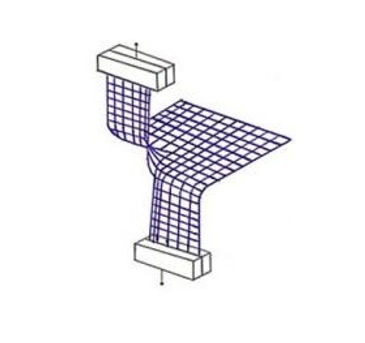ASTM D1938
Trouser Tear-Propagation Test on Plastics

Standard Test Method for Tear-Propagation Resistance (Trouser Tear) of Plastic Film and Thin Sheeting by a Single-Tear Method
Theory:
ASTM D1938 is used to evaluate and characterize the tear propagation of a plastic film by means of a trouser tear method. The trouser tear method is very similar to the tongue tear method used for textiles covered under ASTM D2261. Certain types of highly extensible plastic films will stretch before tearing and these are handled differently than slightly extensible or non-extensible films.
This test method is similar in theory to ISO 6383-1, however different sized samples are used and the test is performed at a different rate of extension.
Geometry:
Plastic films and thin plastic sheeting are flat, thin, and ribbon-like. Thin sheeting is defined as any non-brittle plastic with thickness less than 1mm or .04 inches. Plastic film is characterized with having thickness less than .25mm or .01 inches.
Solution:
Dual-action vise grips are ideal for this type of testing. Eccentric self-tightening roller grips can also be used and are lower cost compared to the vise grips. The grips must be seperated at a constant rate of extension which is specified in the official publication.
Analysis:
Calculations for ASTM D1938 are made in order to analyze the tear propagation of the material. The maximum tearing strength is noted by the peak load seen during the test. The average tearing strength can also be determined by averaging the values over a specific data set.
Similar Specifications:
